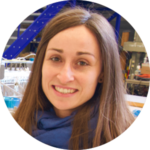What to remember for particle accelerators. Pre-recorded videos from the ARIES MOOC to be viewed prior to the live revision session on Day 1.
 Elias METRAL
Elias METRAL
Fields and forces / Acceleration by time varying fields / Relativistic equations
Overview of acceleration / Transit time factor / Main RF parameters / Momentum compaction factor / Transition energy
Equations related to synchrotrons / Synchronous particle / Synchrotron oscillations / Principle of phase stability
RF acceleration for synchronous and non-synchronous particles / Small and large amplitude oscillations
Prerequisites: classical mechanics and electromagnetism
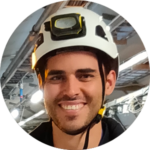 Alexandre LASHEEN
Alexandre LASHEEN
Example of a simple storage ring: nonlinear effects from a single sextupole / Phase space portraits close to resonances / Resonance diagrams / Hamiltonian of the nonlinear betatron motion and Resonance Driving Terms / Resonance topology and onset of chaos, resonance overlap criterion / Suppression of resonances by lattice symmetry / Compensation of individual resonances with corrector magnets / Dynamic Aperture / Frequency Map Analysis / Lattice optimization by tracking / Making use of resonances: resonant slow extraction and multi-turn extraction
 Davide GAMBA
Davide GAMBA
Introduction to synchrotron light sources / Radiation of accelerated charged particles / Radiation from bending magnets / Radiation from undulators and wigglers / Electron dynamics with radiation / Brightness and Low emittance lattices / Introduction to FELs / Workshop: “Design your light source”
 Rasmus ISCHEBECK
Rasmus ISCHEBECK
Lectures cover :
General aspects of particle collisions: choice of particle species, different layouts; definition of geometry with bending magnets, focusing of particle beams with quadrupoles; review of matrix formalism, phase space ellipse, emittance, phase advance, tune and chromaticity; characteristics and design criteria of hadron and lepton storage rings; discussion of different basic cells; sections for RF cavities; dispersions suppressor schemes; characteristics of mini-beta insertions; luminosity and limitations; examples of matching sections
Workshop :
Work on case-study in small groups; proposal of an accelerator design based on given boundary conditions
Space charge force / Effects of space charge in circular accelerators / Wake fields and coupling impedances / Effects of wake fields in linear accelerator: the Beam Break Up example / Brief remarks on effects of wake fields in circular accelerators.
Prerequisites – maths: differential equations and Fourier transform / mechanics: free and driven oscillators / basic electromagnetism and boundary conditions
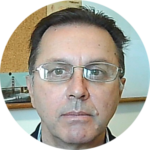 Mauro MIGLIORATI
Mauro MIGLIORATI
The Ideal Storage Ring: Lorentz force & particle momentum – defining the magnetic guide field / Focusing elements & the equation of motion / Single particle trajectories / Matrix description of lattice elements
Particle Trajectographies in a Circular Accelerator: Beam orbit / Transverse particle oscillation and tune / Defining the beam size / General solution of the equation of motion: the amplitude betatron function / Phase space area of a particle ensemble: Beam emittance / Stability criterion in periodic structures.
Lattice Design in Particle Accelerators: Calculation of the optical parameters / FoDo cells: design and optimisation / Interaction regions: the low beta insertion.
Changing the Particle Momentum: beam acceleration and adiabatic shrinking of the emittance / Dispersion trajectories / Orbit lengthening and the momentum compaction factor.
Errors in Field and Gradient: Quadrupole errors and tune shift / Chromaticity and its correction / Sextupole magnets and the dynamic aperture
Introduction to the principles of beam optics / Analytical treatment of the motion of charged particles in electric and magnetic fields / Guiding and focusing electrostatic and magnetostatic devices / Equations of motion of charged particles in optical assemblies / Transport matrix / Phase space, emittance, beam matrix / Examples of optical systems and their treatment: spectrometer, mass separator…
 Bernhard HOLZER
Bernhard HOLZER
A description of the potential and limitation of the MAD-X code will be given together with daily-life tricks and fully-fledged examples.
The MAD-X tutorials will be complementary to the transverse dynamics ones for putting in practice the transverse beam dynamics theory.
Objectives:
- Run macroparticle simulations with a state-of-the-art open-source tracking code
- Simulate several case-studies related to the course
- Play with beam parameters and observe the impact on the longitudinal beam dynamics.
 Benoît SALVANT
Benoît SALVANT
Basic methods of linear acceleration / Fundamental parameters of accelerating structures / Energy gain in linear accelerating structures / Single particle dynamics in linear accelerators / Multi-particle dynamics in linear accelerators.
Prerequisites: general mechanics, Maxwell equations, relativistic dynamics in magnetic and electric fields, maths for physicists and engineers (Fourier transform, Bessel functions…)
 David ALESINI
David ALESINI
Accelerator performance parameters and non-linear effects
Linear and non-linear oscillators: Integral and frequency of motion / Pendulum / Damped harmonic oscillator
Phase space dynamics: Fixed point analysis
Non-autonomous systems: Driven (damped) harmonic oscillator / Resonance conditions
Linear equations with periodic coefficients – Hill’s equations: Floquet solutions and normalized coordinate
Perturbation theory : Non-linear oscillator / Perturbation by periodic function – single dipole perturbation / Application to single multipole – resonance conditions / Examples: single quadrupole, sextupole, octupole perturbation / General multi-pole perturbation / Examples: linear coupling / Resonance conditions and working point choice
Resonances and the path to chaos: Topology of 3rd and 4th order resonance / Path to chaos and resonance overlap / Dynamic aperture
Frequency map analysis: NAFF algorithm / Aspects of frequency maps / Frequency and diffusion maps for the LHC / Frequency map for lepton rings / Working point choice / Beam-beam effect
Experiments: Experimental frequency maps / Beam loss frequency maps / Space-charge frequency scan
 Hannes BARTOSIK
Hannes BARTOSIK
Single-turn injection / Off-axis injection / Injection into the longitudinal phase space / Phase space matching / Topping-up / Fast extraction / Resonant extraction / Septum and kicker magnets
Nicola CARMIGNANI
Introduction and principle / Basic equations / Cyclotron components and subsystems / Beam dynamics, stability and focusing / Beam quality and phase space / Extraction / History and applications
 Bertrand JACQUOT
Bertrand JACQUOT
Goal of the module:
Show principles behind the practice discussed in the RF engineering module
Topics addressed:
The lectures review Maxwell equations and electro-magnetic wave equations, in particular for for time harmonic electro-magnetic fields, both in vacuum as well as in media relevant for particle accelerators technology.
The boundary value problem of propagation in cylindrical metallic waveguides is studied with vector potentials and the different modes are discussed. The rectangular waveguide example is developed in detail.
Exercises session:
The exercise session deals with the design of rectangular waveguide and the reading of 3D electromagnetic simulation of fields in state-of-the-art accelerating structures.

Andrea MOSTACCI
Basic concepts :
- Introduction in RF engineering for particle accelerators
- Transmission-lines (TEM and waveguides), cylindrical (“pill-box”) resonator
- Standing waves, Smith-chart, scattering parameters
Some RF engineering details and examples :
- Accelerating structures (standing / travelling wave)
- Power RF (klystron, IOT, solid state, multipactor, protection elements)
- RF measurement techniques (diode detector, oscilloscope, spectrum analyzer,
vector network analyzer)
Active student participation :
- Quiz, Q&A, PC software examples (using eg. Qucs, HFSS)
Christine VOLLINGER & Manfred WENDT
Cryogenic fluids / Heat transfer and thermal insulation / Thermal screening with cold vapour / Refrigeration and liquifaction
 Philippe LEBRUN
Philippe LEBRUN
- Superconductivity in accelerators: where do one finds it, why / Overview of the various theoretical approaches: validity, applications, limitations / London, Ginzburg-Landau, BCS models / Characteristic lengths/RF surface resistance.
- Vortex behavior: how it fixes the limits of operation in a superconductor/ Difference of regimes and behaviors required for magnet applications vs RF applications/Crystalline defects and Vortex penetration/ Crystalline defects and Pinning.
- Optimization of SC materials/Optimization of magnet filament: optimizing pinning centers/development of fragile materials/ Cavity materials: surface preparation/ New SRF materials.
The aim is to provide to physicists non expert in material science a glimpse on how materials are tailored (and must be chosen) for any particular application.
 Claire ANTOINE
Claire ANTOINE
Basics of vacuum science and technology; Physical units / kinetic theory of gases / Gas flow and pressure distribution calculations in complex vacuum systems
Fundamentals of gas-surface interactions leading to outgassing / Physisorption / Chemisorption / Diffusion of gases in solids and surface phenomena
Dynamic outgassing under particle bombardment
Vacuum systems, usual materials and components / Surface and bulk cleanliness definition / Diagnostics and preparation treatments
Pumps, gauges / Gas analysers / Leak detectors
Specificities of accelerator vacuum systems / Lumped versus distributed pumping devices / General review of beam-vacuum interactions and related problems
 Vincent BAGLIN – Roberto KERSEVAN
Vincent BAGLIN – Roberto KERSEVAN
Particle sources. The course will review the different type of particle sources and their productions:
Electron-emission properties (thermal emission, field emission, photon induced emission) / Electron sources and positron source
Introduction to ion production and some basic concepts
Different kind of ion sources: proton/1+ -ion sources, H– -ion sources / Sources for highly charged ions / Radioactive ion beams
Low energy electron accelerators
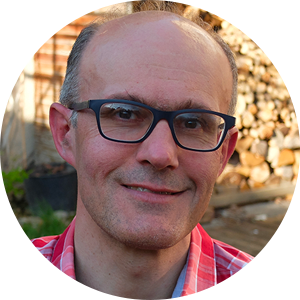
Thomas THUILLER
After a brief introduction to the IBA company, the first part of the course discusses the use of cyclotrons for medical applications. Aspects like magnetic design, central region design, internal versus external ion sources, magnetic field mapping and beam extraction are covered. Also, some features of targets for radioisotopes are shown.
The second part of the course deals with particle therapy of cancer. The main requirements and the main sub-systems of the proton-therapy facility are explained. The solution of cyclotrons for proton and carbon therapy is covered and the latest development of superconducting synchrocyclotrons for proton-therapy is looked at in some detail.
The third part of the course discusses the Rhodotron, an electron accelerator used for industrial applications.
Geodetic metrology and case studies
Jean-Christophe GAYDE
Basic principles of radiation physics and radiation protection rules: the different ionizing radiation sources of importance around accelerators and their interactions with matter / The shielding of electron accelerators, proton accelerators and synchrotron beamlines / Radiation monitoring
Personnel safety systems
 Xavier QUERALT
Xavier QUERALT
Motivation for using SC cavities (LEP example)/Comparison of normal and superconducting RF surface impedance/How to measure the Rf surface impedance for SC material/Parameters which enter the design of SC cavities and resonators/the main and HOM (higher order mode) coupler /Measurement methods for the Q value/Coupling to the generator/Mechanical oscillations from the Lorentz force /Examples of in situ diagnostics of surface defects/ some examples of applications.
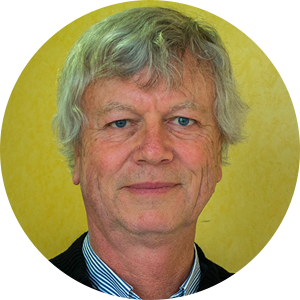
Fritz CASPERS
This course is meant as an introduction in magnet technology focusing on normal-conducting, iron-dominated electro-magnets.
The main goals are to create a fundamental understanding of electro-magnets used for particle accelerators and beam transfer lines, to provide a guide book with instructions how to start with the design of a standard accelerator magnet and to present aspects related to magnet construction, manufacturing, testing and measurements.
The theoretical part will be interleaved by a number of practical examples and a case study where students will design a real-world magnet for a medical particle accelerator.
Introduction: Historical background / Maxwell’s equations / Field description by multipoles / Basic principles and concepts of accelerator magnets / The role of the magnetic circuit / Particularities of magnetic steel / Magnet types and their functions.
Analytical magnet design: Understanding the requirements / The analytical design process / Magnet components and their purpose / Designing the magnetic circuit / Coil dimensioning and cooling layout
Magnet manufacturing: The magnet lifecycle / The manufacturing process / Material selection: magnetic steel, insulation materials, conductor materials / Modern production techniques / Auxiliary magnet components / Cost estimates and cost optimization.
Applied numerical design: the numerical design process / Building a 2D finite-element model / Interpretation of results / Improvement of the field quality and pole profile optimization / The importance of mechanical tolerances and the consequence of assembly errors / Limitations of numerical calculations
 Jérémie BAUCHE
Jérémie BAUCHE
Particle accelerators and magnets / Dipoles and Quadrupole magnets / Superconductivity / Practical superconductors / Wires / Cables / Magnetic Design / Perfect Dipole and Quadrupole Field / Field Representation / Sector Dipole and Quadrupole / Maximum field and gradient / Coil thickness / Iron yoke / Coil fabrication / Forces / Stress / Pre-stress / Support structures / Quench / Protection / Training
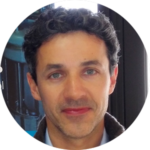 Paolo FERRACIN
Paolo FERRACIN
The course gives an overview of the most frequently used beam diagnostics instruments at electron and proton accelerators, putting about equal weight to LINACs and synchrotrons. In addition, applications for their usage during operation and accelerator physics investigation are discussed.
The outline of the lecture is orientated on the beam quantities:
Beam current measurements using transformers / Faraday cups and particle detectors
Beam profile measurements using various methods such as scintillators screens, SEM-grids, wire scanners, residual gas monitors and synchrotron radiation
Transverse emittance measurements with slit-grid devices or reconstruction using quadrupole variation
The principle of RF pick-ups for beam position measurements as well as tune or other lattice function determinations
Longitudinal measurements of momentum spread and bunch structure using picks-ups, particle detectors or synchrotron radiation
Beam loss detection for beam alignment and machine protection.
Prerequisites: A good knowledge of general physics is required, as well as the basics in accelerator theory. The first year university mathematics is presumed, including matrix calculus, Fourier transformation and complex numbers. Only basic knowledge of detector physics, high frequency technologies and electronics is needed, more complex devices is discussed.
From their first conception in the early 30’s to the present giant colliders, accelerators have always played an indispensable role in nuclear and particle physics. The total number of accelerators in the world is presently estimated to be around 45000, but less than 0.5% is used for high-energy physics, the domain for which accelerators have been invented and which gave them their greatest visibility and celebrity. Almost 50% of all present accelerators are used in industry and more than 40% for health applications, the vast majority being accelerators with energies below 50 MeV. They produce beams of charged particles, photons or neutrons, and are used in hospitals, in manufacturing plants, in sterilisation facilities, in small research laboratories, in ports, on ships at sea, in museums and at many other places.
In this course, we will review these low-energy accelerators and their applications in five major domains : radiotherapy, radioisotope production, radiation processing, ion implantation and non-destructive analysis of materials. For each domain we will address the basic principles of their use, the main applications, the corresponding facilities and their design challenges.
High power proton beams are required for a very large variety of applications in nuclear physics, particle physics, neutrons and material science, nuclear waste treatment…
Many facilities are under project or construction worldwide and are facing several challenges.
In this course, we will review the different applications of high power beams and the corresponding existing facilities or ongoing projects, then address the basic principles of these accelerators and finally present the main issues and challenges to deal with these very high power beams.
Mohammad ESHRAQI
The course gives an overview of Accelerator Control Systems, their purpose, and their architecture. Commonly used hardware is introduced by examples. Finally the borders of a Control System are briefly discussed.
The “life” of a particle accelerator is made of several steps from early stages of expression of interest to dismantlement.
Beyond the classical periods study-fabricate-install-test-operate-maintain, we will look at the associated links customer/supplier and the surroundings fields, such as the building.
In a second part, the subject of “reliability” will be used to illustrate several mechanisms occurring during the life-cycle of an accelerator.
Samuel MEYRONEINC


